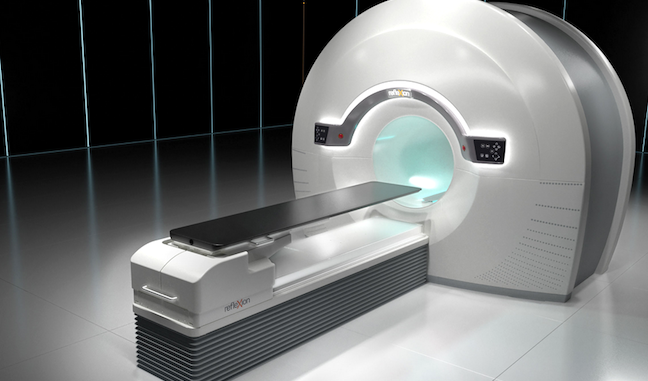
The Stanford Cancer Institute will soon be the first hospital in the nation to use a new technology intended to reduce the number of radiation treatments for cancer patients.
Stanford purchased the radiation delivery machine, called the X1, from Hayward-based RefleXion Medical, an 11-year-old medical research and equipment manufacturing company.
According to the company, the X1 is the first machine to use combine high quality computed tomography (or CT) scans with a linear accelerator to deliver precise radiation to a cancerous tumor and avoid healthy tissue.
Also, because the machine spins 60 times faster than existing radiation systems and controls the radiation dose delivery from 100 firing positions, it significantly reduces the number of treatments required, according to the company.
Combined, these developments are aimed at reducing the side effects of radiation treatments by helping doctors better locate a tumor, reduce setup errors and avoid healthy tissue.
The X1 machine is cleared for the delivery of stereotactic body radiotherapy (SBRT), stereotactic radiosurgery (SRS) and intensity modulated radiotherapy (IMRT).
The X1 is called “the first steppingstone” to an even bigger advancement, according to RefleXion.
The company soon hopes to being delivering its biology guided radiotherapy technology (BgRT), which, when combined with the X1, will be able to target multiple tumors at once.
The BgRT uses positron emission tomography (PET), widely used for diagnosing cancer, to instead treat tumors, according to the company.
“The idea was to use individual emissions that make up a partially formed PET image, and are generated by the tumor, as a homing signal or biological marker to quickly guide radiotherapy to that location,” said Sam Mazin, the company’s co-founder and chief technology officer. “In essence, turning cancer on itself to destroy it.”
This would mean that for the first time, doctors could provide radiotherapy to patients with stage 4 cancer, according to the company. — Bay City News

Interesting advance.
FWIW: I received & was cured of Stage IV cancer (as assessed at Stanford) by a combination of radiation therapy and chemo back in 2008, so I question the final comment of the article.
The precision of this advance would likely prevent some of the side effects I experienced, though.
Amazing news. When will it be released to patients? I need to undergo the treatment around August. Can I be referred by my doctor?
Let’s hope this will be released soon enough!